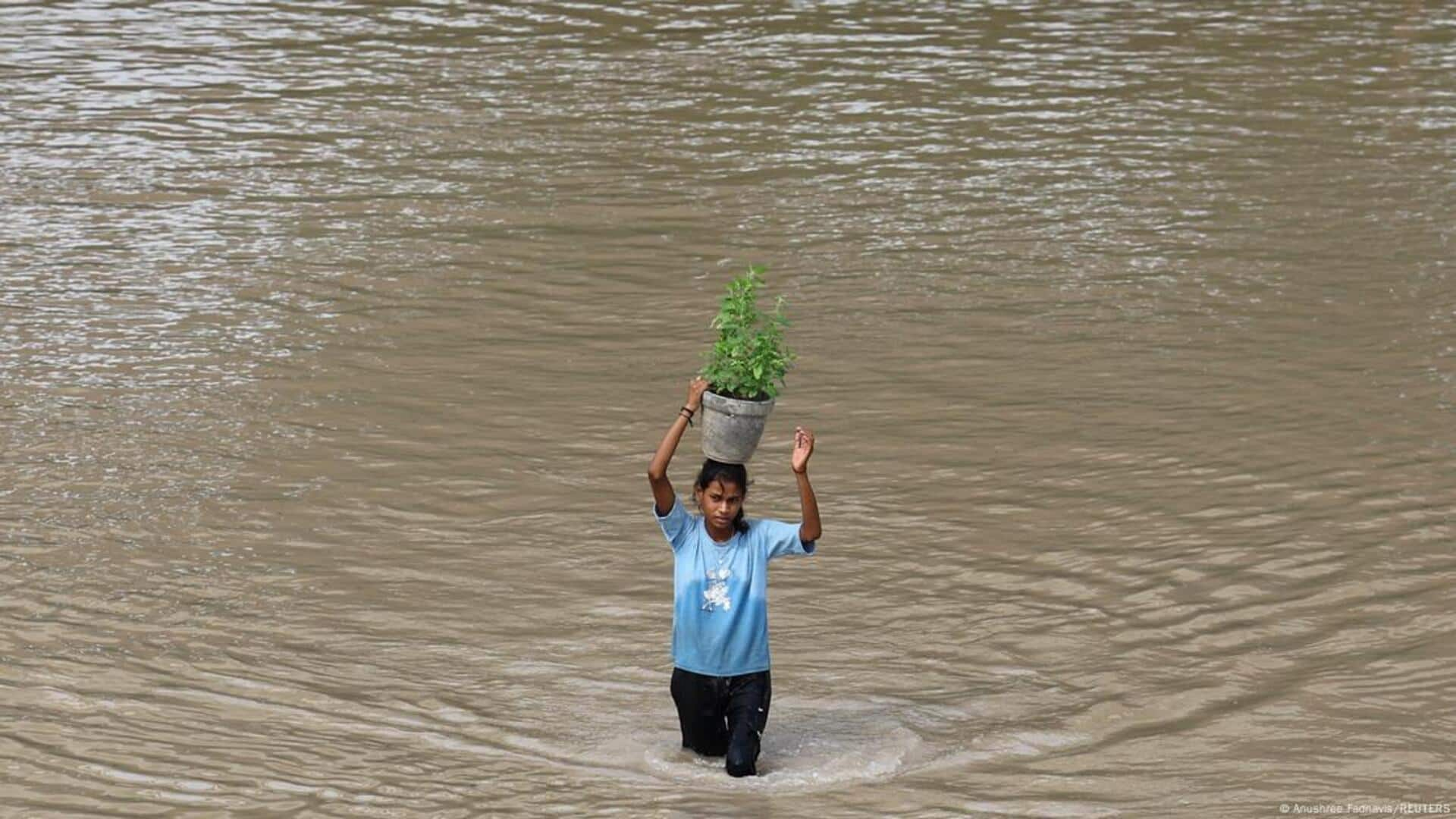
Punjab floods, J&K landslides, Himachal cloudbursts: What's behind these catastrophes
What's the story
North India has experienced its wettest two-week period in at least 14 years, according to the India Meteorological Department (IMD). Between August 22 and September 4, the region received nearly three times its normal rainfall. The extreme weather conditions have resulted in cloudbursts on the Vaishno Devi route in Jammu and Kashmir, floods in Punjab, landslides in Himachal Pradesh and Uttarakhand, and floodwaters entering homes and displacing hundreds in Delhi as the Yamuna crossed the danger mark.
Rainfall record
Rainfall nearly 3 times normal average
During this period (14 days), north India recorded 205.3mm of rain against a normal average of 73.1mm. This accounts for a whopping 35% of the region's average four-month monsoon quota. Meteorologists predict that with such heavy rainfall, north India could be on track for its wettest monsoon since 1988, The Times of India reported.
Monsoon surplus
Second-wettest monsoon since 1988 for north India
Northwest India has already received 691.7mm of rain, nearly 37% more than the seasonal average, since the monsoon started on June 1. That means even if rainfall remains normal for the rest of September, totals are expected to exceed 750mm by season's end. This would make 2023 north India's second-wettest monsoon in the last half-century after 1988 (813.5mm) and ahead of 1994 (737mm).
Weather phenomenon
Rare back-to-back interactions between weather systems caused intense rains
IMD chief Mrutyunjay Mohapatra attributed the intense rains to rare back-to-back interactions between two weather systems. Western disturbances carrying moist winds from near the Mediterranean converged with monsoon currents from the east. These interactions are known to cause very heavy rainfall and cloudbursts in western Himalayan states, such as the Kedarnath deluge in June 2013.
Rainfall impact
Punjab worst hit, with over fourfold surplus rainfall
With 43 deaths and lakhs displaced, Punjab's CM Bhagwant Mann said these were the worst floods the state had seen in 40 years. Torrential downpours have raised the water levels in the state's Sutlej, Beas, and Ravi rivers to unsafe levels, putting hundreds of low-lying communities at risk. According to the government, crop damage has occurred on around 148,000 hectares of inundated agricultural land. A quarter of Punjab's 30 million residents rely on agriculture, prompting immediate concern about rural livelihoods.
States
IMD has predicted above-normal rainfall in September
Haryana, Delhi, and Chandigarh also saw a surplus of 325% till September 3, while Himachal Pradesh recorded a surplus of 314%. West Rajasthan (285%), Jammu & Kashmir (240%), and Uttarakhand (190%) also witnessed severe surpluses leading to flash floods and landslides. The IMD has predicted above-normal rainfall in September and warned of more landslides and flash floods in Uttarakhand and Himachal. The monthly average rainfall is predicted to exceed 109 percent of the long-period average of 167.9 mm.